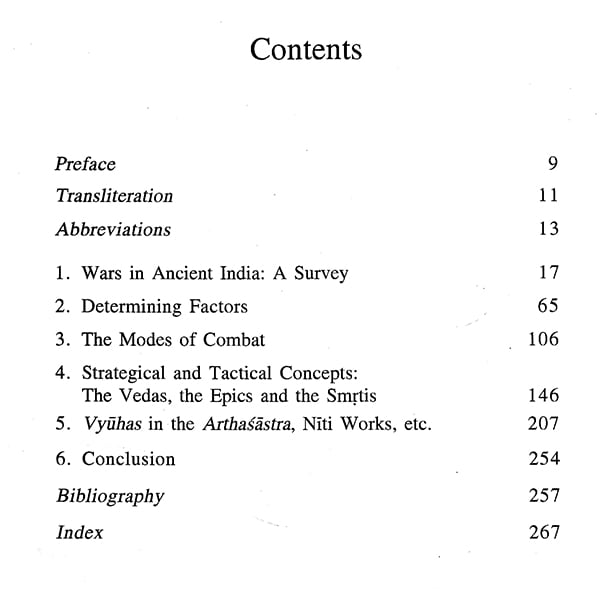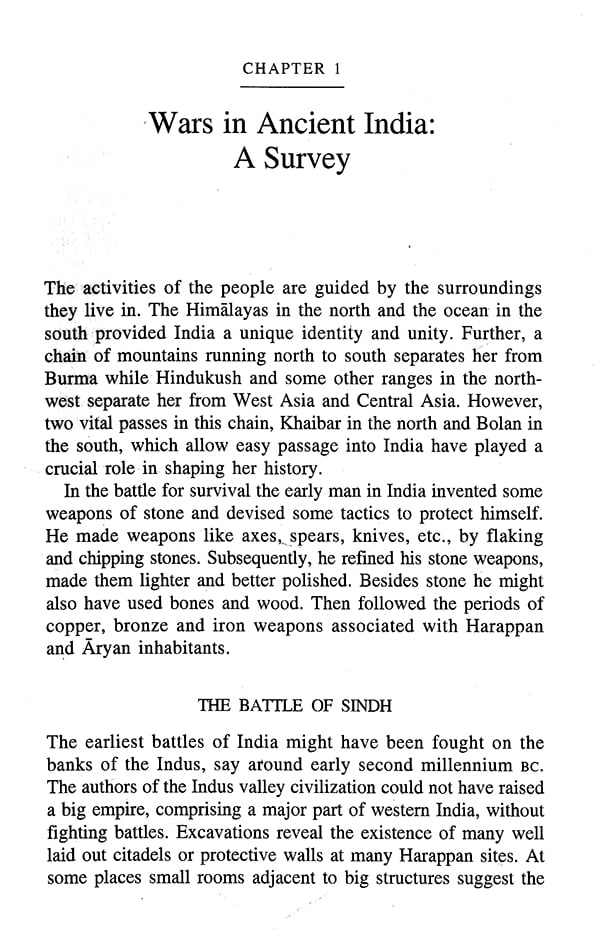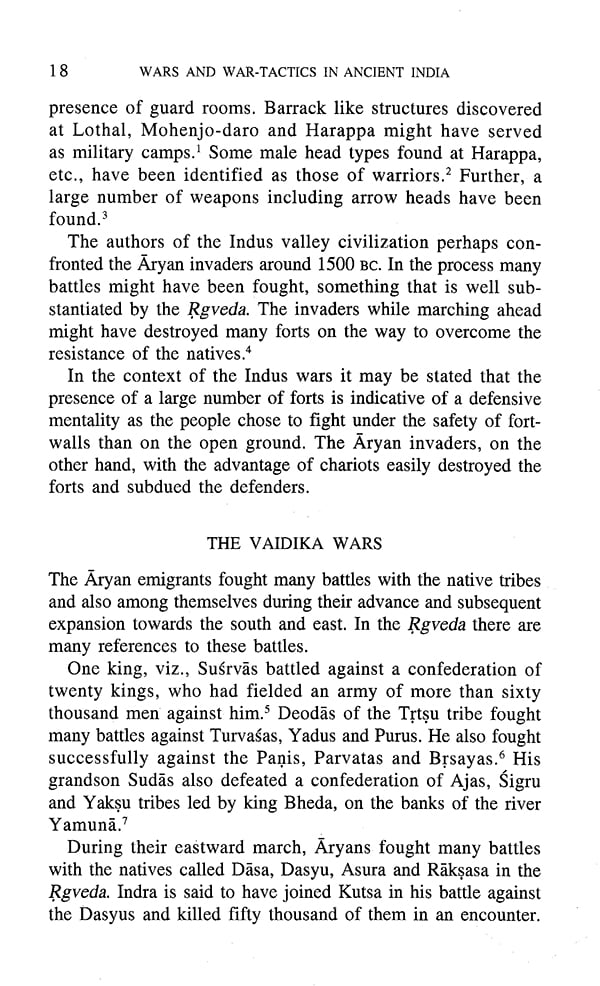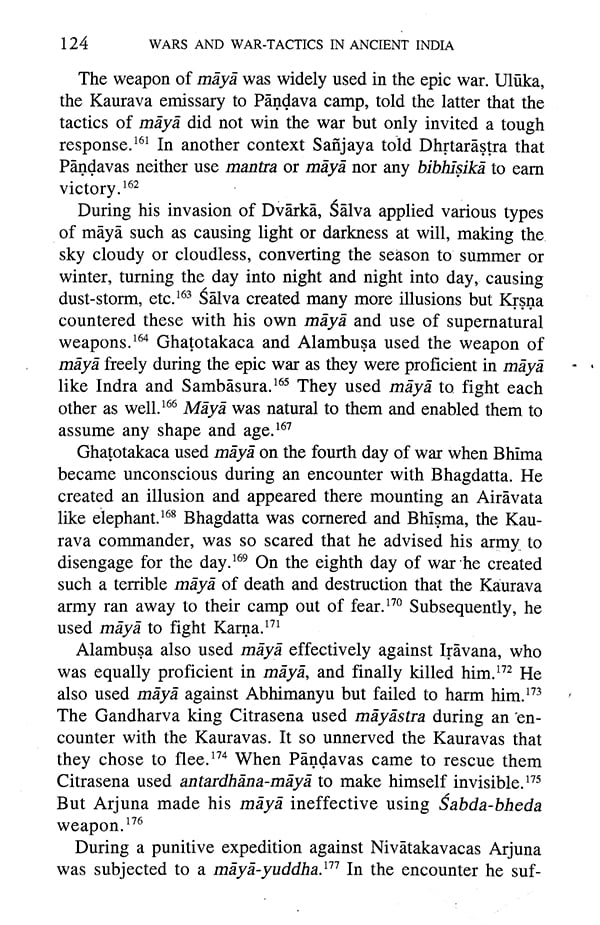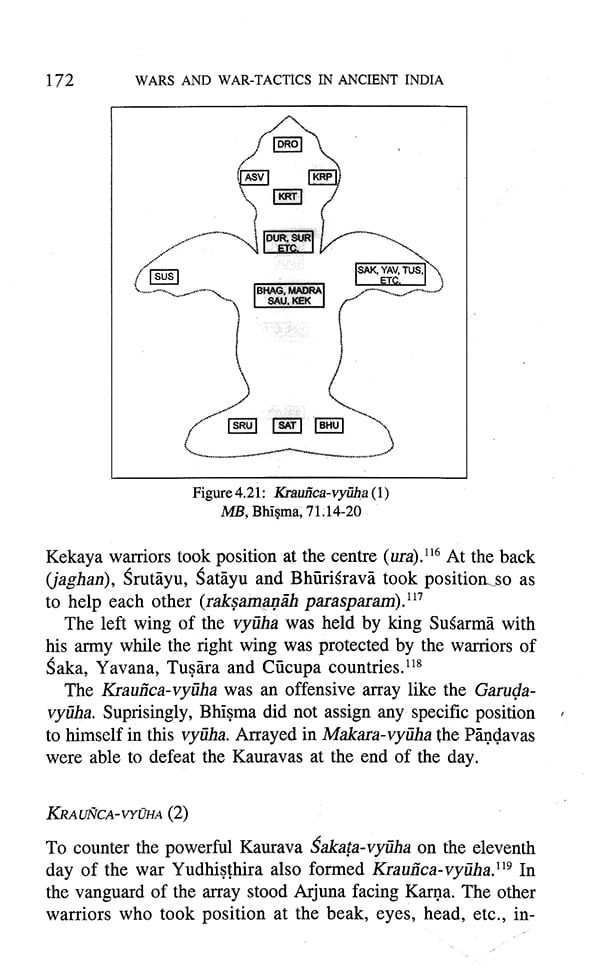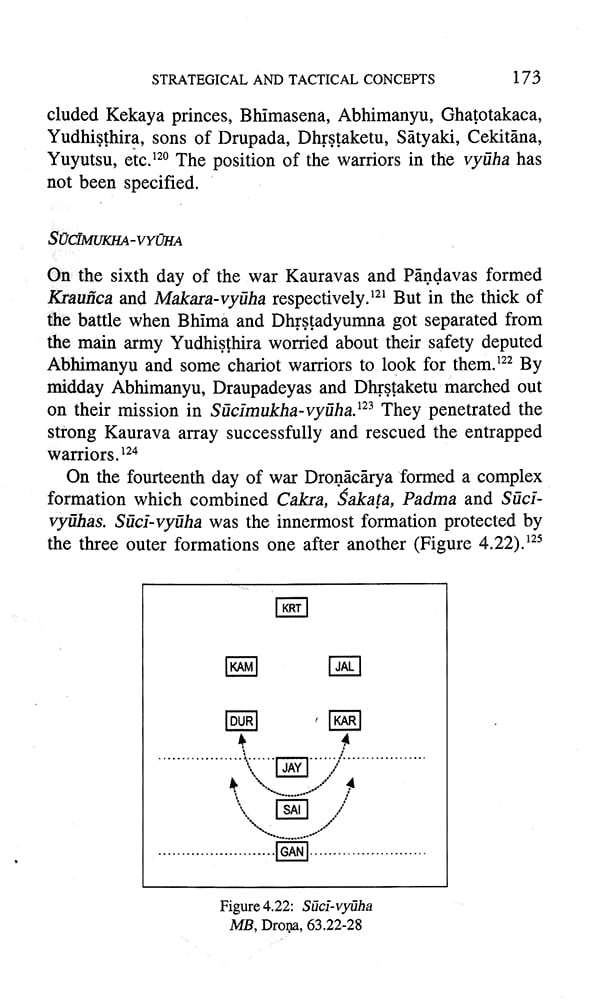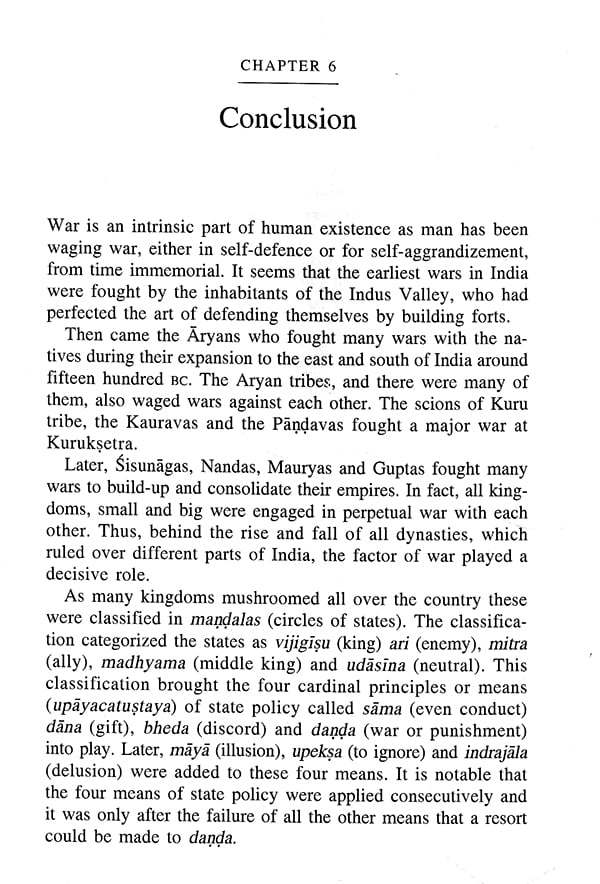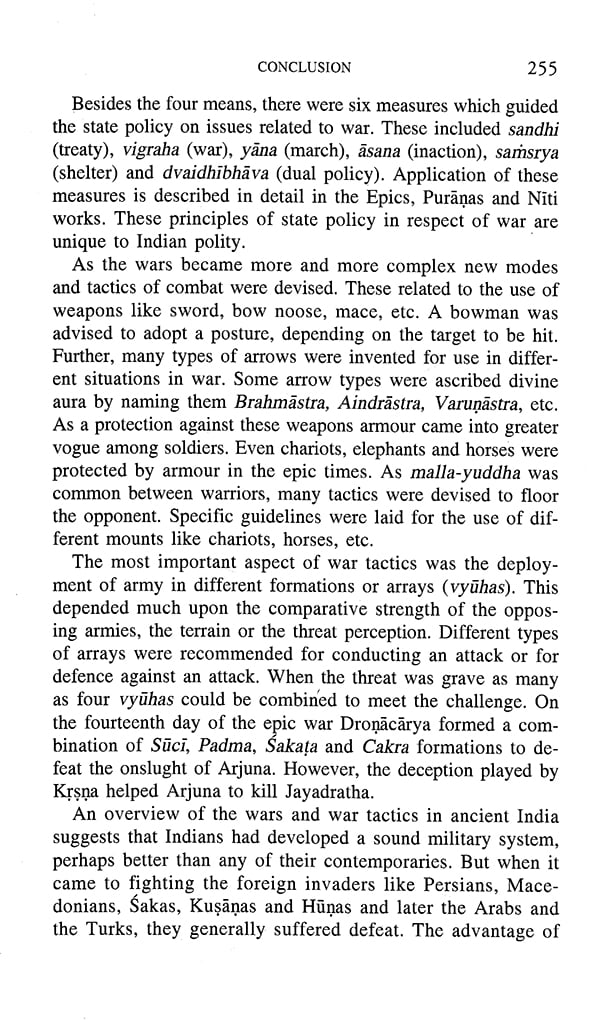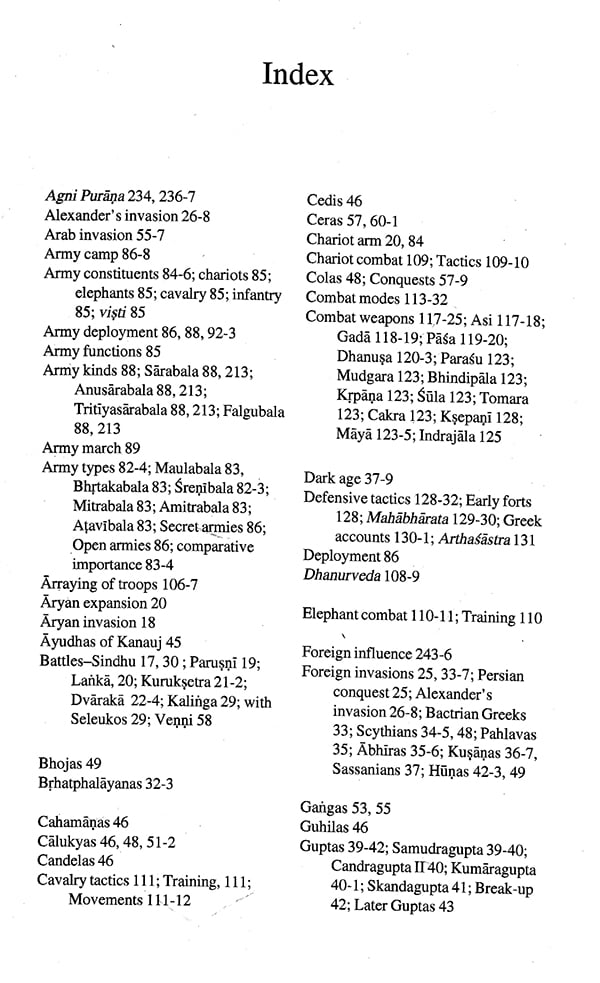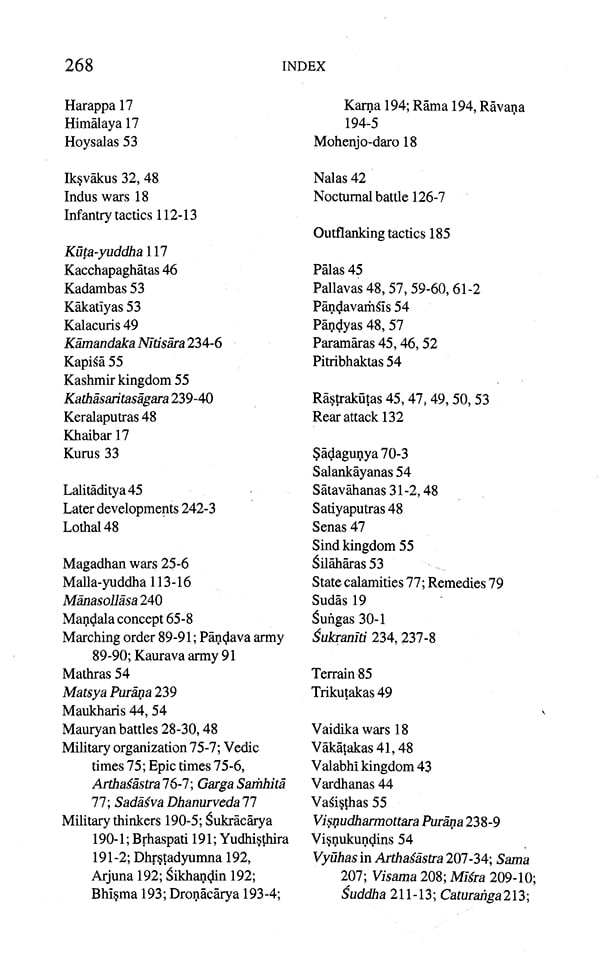
Wars and War-Tactics in Ancient India with Special Reference to the Vedas, Epics, Puranas and Niti Works
Book Specification
| Item Code: | NAZ314 |
| Author: | Uma Prasad Thapliyal |
| Publisher: | Manohar Publishers and Distributors |
| Language: | English |
| Edition: | 2021 |
| ISBN: | 9789390035632 |
| Pages: | 276 (78 B/W Illustrations) |
| Cover: | HARDCOVER |
| Other Details | 8.80 X 5.80 inch |
| Weight | 460 gm |
Book Description
Beginning with the Harappan age, Indian history is crowded with wars fought on its land. These wars led to the birth and decline of many a kingdoms and empires. As armies and weapons were basic instruments of war, various tactics related to their use also came to be perfected over the centuries.
This work is prefaced by a general survey of the wars fought in ancient India, whose accounts are available, to serve as a backdrop to the study. The rise and fall of the kingdoms covered in this study provide substantial evidence of wars fought galore in ancient India.
With time new strategies of war such as circle theory, six means, four measures, etc., came to be developed. Advanced modes of combat were devised and new methods related to the use of various weapons were perfected. But far more important were the strategical and tactical concepts perfected by the Indians over the centuries. The Mahabharata and works like the ArthaSastre, the KamandakTy Nitisara and the ,Likraniti contain graphic descriptions of war tactics as these evolved over the centuries. It is hoped that this study will inspire researchers to delve deeper into this little explored field of study.
U.P. Thapliyal, an alumnus of Allahabad and Delhi Universities, was Director, History Division, Ministry of Defence till 1996. He has authored, compiled and edited more than thirty books on the military history of India including Warfare in Ancient India, Military Flags of India - from the Earliest Times, etc.
His research papers have been published in reputed history journals. He has also been a Senior Academic Fellow with ICHR.
War is rooted in human nature. Man has been fighting either for self-preservation or self-aggrandizement ever since his existence. To bolster his fighting capability he has been manufacturing various kinds of weapons right from palaeolithic times. For safety, he first sought shelter in the caves and then built forts to ward off danger.
Subsequently, the tribal societies started living in groups to fight back the enemies and these groups later evolved into armies. The bravest among the group was made the commander or the leader and this might have been the case with all early societies. In India, the authors of the Indus valley civilization lived in forts, manufactured weapons and maintained armies.
The Vedic Aryans who followed them were better organized militarily. They considered war as a ladder of progress and prayed for sons who could destroy enemies. The Rgveda is dedicated to Indra, the God of War, and one-fourth of the hymns eulogize his heroic deeds. A hymn in the Atharvaveda reads: `Oh braves! Rise with your standard and be prepared, for your enemies are like killer serpents. They are devils. Subjugate them.... Oh braves! Destroy your enemies and kill their Commander with your army.'
This Vedic concept of war is also reflected in the epics which are basically heroic tales. In the Mahabharata, Krsna exhorted Arjuna to join the war as 'there is no better duty for a Ksatriya than to fight a righteous war and that only fortunate ones find an opportunity to fight such a war'.
Beginning with the Harappan age, Indian history is crowded with wars. As the armies and weapons evolved, various tactics related to their use also came to be perfected. The science which dealt with the related knowledge was termed dhanurveda. This research effort has been prefaced by a general description of `Wars in Ancient India' to serve as a backdrop of the study.
**Contents and Sample Pages**
